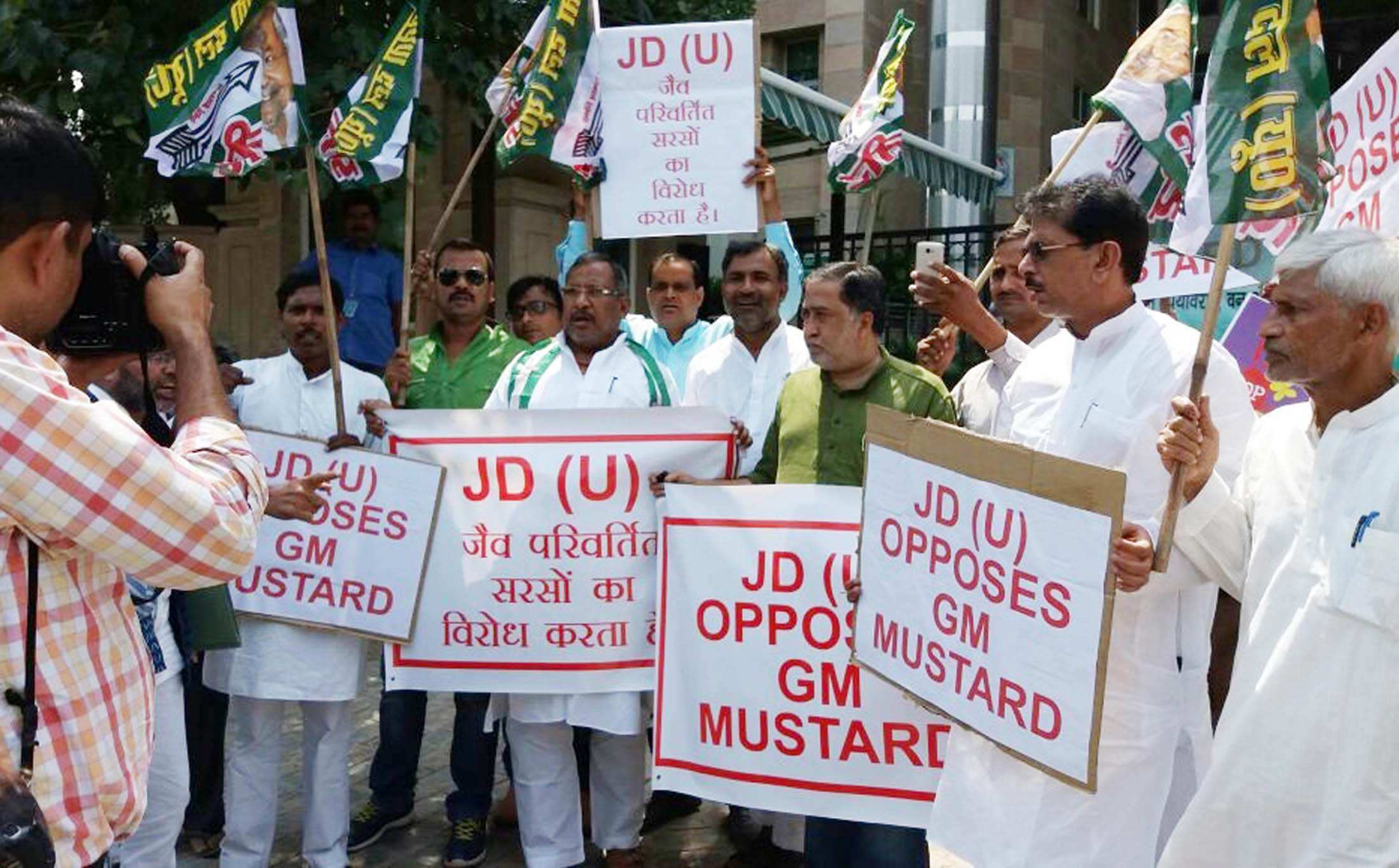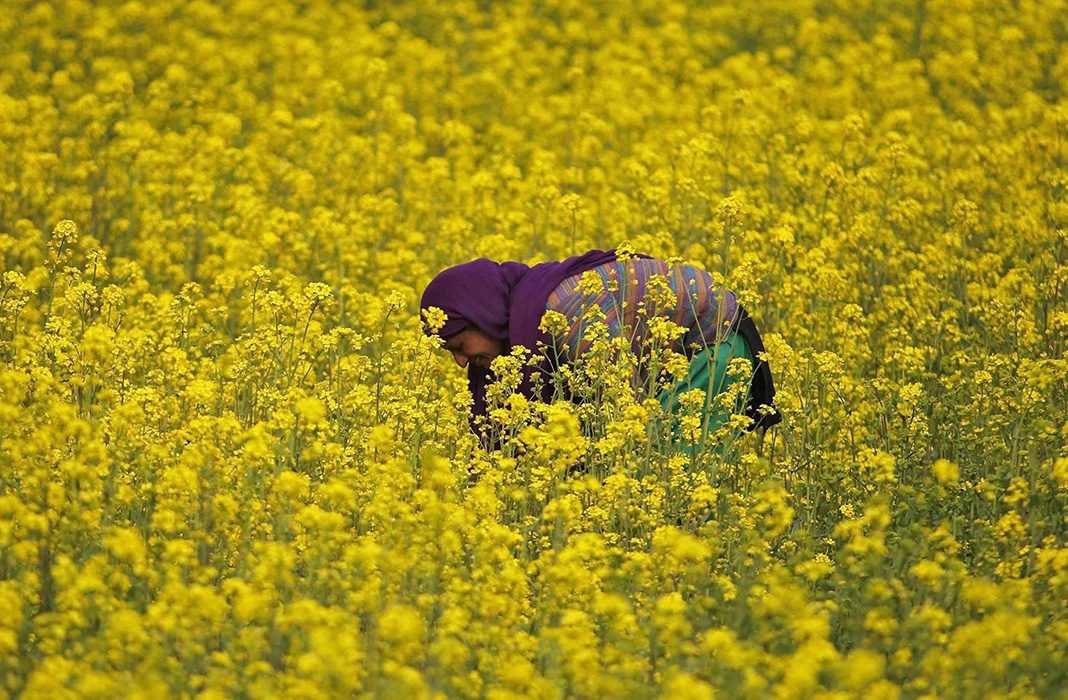Another genetically modified crop, mustard, faces an uncertain future with the Supreme Court and the government passing the buck
By S Gopikrishna Warrier
The history of Genetically Modified (GM) crops in India is rooted in controversies ranging from safety and pricing to regulations, intellectual property rights as well as political and judicial intervention. Now, the latest GM crop to make its India debut, mustard, faces a similar fate. Farmers will not be planting seeds of GM mustard (hybrid DMH-11) in the ongoing sowing season after the Supreme Court declined to pronounce its orders on the case relating to permission for its commercial release. With the government taking the stand during the October 24 hearing that it would not release the seeds without the Court’s approval, a stalemate was inevitable. The courts have had a busy time over the case involving commercial use of DMH-11. The Supreme Court first stayed its release on October 7, asking the Union government to seek public opinion before releasing it for cultivation. On October 17, the Court extended the stay till further orders.

Ironically, India has the world’s fourth largest GM crop acreage on the strength of Bt cotton, the only genetically modified crop allowed in the country. GM food crops, however, have fallen on barren ground. An agreement to develop Bt brinjal was signed in 2005 and was cleared for commercialization by India’s top biotech regulator, the Genetic Engineering Appraisal Committee, in 2009. Moratoriums imposed by then environment minister Jairam Ramesh and his successor Jayanthi Natarajan following opposition from civil society groups and brinjal-growing states put a brake on the process. Divisions in the government—Manmohan Singh and Narendra Modi have subsequently backed GM crops—show how fragile the foundation of GM crops is in India.
Ironically, India has the world’s fourth largest GM crop acreage on the strength of Bt cotton, the only genetically modified crop allowed in the country. GM food crops, however, have fallen on barren ground. An agreement to develop Bt brinjal was signed in 2005 and was cleared for commercialization by India’s top biotech regulator, the Genetic Engineering Appraisal Committee, in 2009.
That makes the case of GM mustard all the more crucial. Its fate would decide the introduction of the first transgenic food crop in the country following the aborted attempt with Bt brinjal. The Bharatiya Kisan Sangh and Swadeshi Jagaran Manch, two organizations affiliated to the RSS, have joined the group of farmers’ and citizens’ organizations petitioning the NDA government not to release the seeds. Ashwani Mahajan, co-convenor of the Swadeshi Jagaran Manch, told a national newspaper that Prime Minister Narendra Modi and the government are being misguided on the issue. The government was keen that the seeds be released before the 2016 planting season (October-November) and a sub-committee of the Genetic Engineering Appraisal Committee (GEAC) of the Ministry of Environment had cleared the GM mustard hybrid from a food and environmental safety point of view on September 5. The ministry had posted the sub-committee report on its website and asked for comments from the public with a deadline of October 5. The entire bio-safety dossier was available for consultation during these 30 days.
 In effect, the sub-committee report found almost no risk from the GM mustard hybrid regarding food and environmental safety. Further, the report said that the applicant had followed all the compliances under the rules. The report became a bone of contention in the Supreme Court when environmental activist Aruna Rodrigues filed an interlocutory appeal on September 28, related to her writ petition filed in 2005. Rodrigues argued that there was collusion between three ministries (environment, agriculture, and science and technology) and the Centre for Genetic Manipulation of Crop Plants, developer of the GM mustard hybrid. She contested the argument that GM mustard will increase yield and alleged that the developers had deliberately downplayed the fact that DMH-11 is a herbicide tolerant plant. The petitioner wanted the ministry to publish the raw bio-safety data on its website and requested the Court to prohibit the open field trials and commercial release of any GM crop, including DMH-11.
In effect, the sub-committee report found almost no risk from the GM mustard hybrid regarding food and environmental safety. Further, the report said that the applicant had followed all the compliances under the rules. The report became a bone of contention in the Supreme Court when environmental activist Aruna Rodrigues filed an interlocutory appeal on September 28, related to her writ petition filed in 2005. Rodrigues argued that there was collusion between three ministries (environment, agriculture, and science and technology) and the Centre for Genetic Manipulation of Crop Plants, developer of the GM mustard hybrid. She contested the argument that GM mustard will increase yield and alleged that the developers had deliberately downplayed the fact that DMH-11 is a herbicide tolerant plant. The petitioner wanted the ministry to publish the raw bio-safety data on its website and requested the Court to prohibit the open field trials and commercial release of any GM crop, including DMH-11.
The decision-making process on GM crops such as DMH-11 has two dimensions—the technical and the democratic. The technical questions are whether DMH-11 is safe as food and fodder and for the environment. The democratic question is whether the country wants DMH-11 or the GM technology.
With the Supreme Court asking the Union government to seek public opinion, and the government doing the same regarding the sub-committee’s report, it is clear that the public has been made the scapegoat till they figure a way out of the stalemate. The decision-making process on GM crops such as DMH-11 has two dimensions—the technical and the democratic. The technical questions are whether DMH-11 is safe as food and fodder and for the environment. The democratic question is whether the country wants DMH-11 or the GM technology. When the apex court and the government delegate their decisions to the people’s court, facts and opinion are interchangeable. With GM crops having as many supporters as detractors, not all versed in the highly technical aspects, a stalemate is inevitable, just as we have now with the mustard variety.
The debate over genetically modified crops has been going through innumerable such cycles. It is time that institutional processes are refined so that the proponents and opponents together run the risks and benefits through a set of agreed-upon parameters. The final score they come up with will help decide whether GM technology, or a particular GM product, is fit for commercial use.
–The author is an environment journalist and blogger
Lead picture: Will this woman’s mustard field on the outskirts of Srinagar be safe from GM infusion? Photo: UNI


